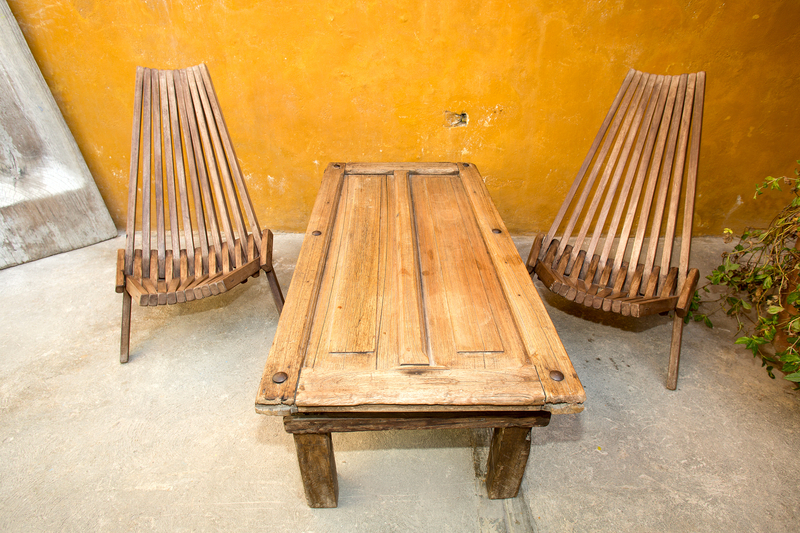Convenient Plant Pot Discarding Strategies
Whether you are an avid gardener or a casual plant lover, chances are you've accumulated a collection of empty plant pots over time. Disposing of these containers efficiently and responsibly can be a challenge, especially with the range of materials they come in - from plastic plant pots to ceramic, clay, metal, or biodegradable options. In this comprehensive guide, we discuss the best plant pot discarding strategies to help you declutter your garden, protect the environment, and even support your local community.

Why Responsible Plant Pot Disposal Matters
The rapid growth of gardening as a hobby has led to an ever-expanding surplus of used and unwanted pots. Improper disposal of plant pots--especially non-biodegradable types--can contribute to landfill waste, pollution, and even chemical leaching that harms ecosystems. By adopting eco-friendly and convenient ways to discard plant pots, you not only free up space at home but also do your part in environmental conservation.
- Reduce landfill waste by diverting reusable or recyclable pots from garbage streams.
- Support circular economies by donating plant pots to community gardens or sharing with neighbors.
- Encourage sustainable gardening practices by making conscious disposal choices.
Assessing Your Plant Pot Collection
Identify Your Plant Pot Materials
Before deciding on the most convenient plant pot discarding strategies, it's important to determine what your pots are made of. Most commonly, plant pots are manufactured from:
- Plastic (including PET, PP, PE, and HDPE varieties)
- Ceramic (glazed or unglazed)
- Terracotta or clay
- Metal (aluminum, zinc, steel, etc.)
- Biodegradable materials (coir, peat, rice husks, or cardboard)
Check the bottom of plastic planters for recycling symbols or resin identification codes to assist with recycling or reusing strategies.
Evaluate the Condition
Not all pots have outlived their usefulness. Inspect each one and sort by:
- Like-new pots: Cracked, chipped, or faded pots go in another pile
- Broken pieces: Irreparably damaged containers
- Rare or decorative types: May be suitable for upcycling or art projects
Top Plant Pot Discarding Strategies
1. Reuse and Upcycle Your Old Plant Pots
One of the most sustainable options is to reuse or repurpose plant pots within your home or garden. Here are some creative ways:
- Seed Starting: Use small pots to start new seedlings or propagate cuttings.
- Organize Tools: Store garden tools, gloves, or small items in larger planters.
- DIY Crafts: Paint, decorate, or transform broken ceramics into garden art, mosaics, or fairy gardens.
- Organize Home Items: Use clean plastic pots for arts and crafts, holding pens, or even sorting toys.
- Drainage Fill: Broken clay pieces can line the bottoms of other pots to improve drainage.
2. Donate Plant Pots to Community Gardens or Schools
Many organizations welcome donations of usable, clean plant pots. This not only declutters your home but supports educational, community, or nonprofit gardening efforts. Consider:
- Community gardens
- School horticulture programs
- Nonprofit nurseries and plant swaps
- Local gardening clubs
A quick online search or social media post can connect you with grateful recipients, making this one of the most convenient plant pot discarding techniques with positive impact.
3. Participate in Retailer Take-Back Programs
Several major garden centers and nurseries now offer plant pot recycling or return programs, particularly for plastic plant pots. These collection initiatives ensure that materials are properly recycled or reused within the industry. Ask your local:
- National and independent garden centers
- Home improvement stores
- Specialized plant nurseries
Some programs only accept specific plastics or pot sizes, so check in advance for requirements. Among the most popular plant pot discarding approaches, take-back programs are both easy and environmentally conscious.
4. Responsible Recycling of Plant Pots
Not all plant pots can be composted or repurposed, especially certain plastics or damaged ceramics. Here's how to recycle responsibly:
- Plastic plant pot recycling: Verify recycling codes (usually #2, #5, or #6 plastics) and confirm local municipal recycling acceptance.
- Ceramic and terracotta recycling: Many centers do not accept ceramics, but some specialized facilities handle construction debris. Alternatively, use as fill in landscaping projects.
- Metal pot recycling: Clean and take to scrap metal depots, which usually accept rusted or odd-shaped items.
- Biodegradable plant pots: Compost at home or through green waste collection programs.
Tip: Clean plant pots before recycling to prevent contamination and ensure acceptance.
5. Composting Biodegradable and Natural Plant Pots
If your pots are made from materials like coconut coir, peat, cardboard, or rice hulls, they can generally be composted at home or via municipal green bins. Break or shred large pots to speed up decomposition. This is a simple and convenient plant pot discarding method for those practicing organic gardening.
6. Upcycling into Garden and Home Decor
For those with a creative flair, old plant pots can become beautiful decor:
- Outdoor luminaries: Drill holes into pots and place solar or tea lights inside.
- Bird baths or feeders: Stack terracotta pots and saucers to build DIY garden features.
- Garden edging: Half-buried pots make charming borders for flowerbeds.
- Miniature planters: Shallow plastic pots repurposed for succulents or air plants indoors.
Not only is this strategy convenient, but it also adds character and sustainability to your living space.
Specific Guidelines for Discarding Different Types of Plant Pots
Disposing of Plastic Plant Pots
- Check for recycling symbols (usually #2, #5, or #6) and contact your local recycling facility for acceptance rules.
- Clean thoroughly--remove soil and labels to prevent recycling contamination.
- Participate in take-back programs if local recycling is not available.
- Avoid burning plastic pots, as this releases toxic fumes.
Dealing with Ceramic, Terracotta, or Clay Pots
- Reuse broken pieces for garden drainage or mosaic art.
- Use for fill in raised beds or large containers.
- Offer intact pots to community projects or via online classifieds.
- As most curbside recycling does not accept ceramics, avoid placing in recycling bins unless local guidelines specifically allow.
Getting Rid of Metal Plant Pots
- Clear out soil, rinse, and remove any non-metal attachments.
- Recycle at local scrap metal yards or reuse around the home for organizing tools or craft supplies.
Composting Biodegradable Plant Pots
- Break into smaller pieces for faster decomposition.
- Add to home compost bin or in green waste collection, wherever accepted.
- Avoid discarding in recycling bins--these materials are not recyclable and should go in compost.
Things to Consider When Discarding Plant Pots
- Local waste management rules: Always verify regulations before discarding.
- Pot cleanliness: Pots should be as clean as possible before recycling, donating, or upcycling.
- Material toxicity: Some old painted or glazed pots may contain harmful substances; avoid composting or burying these types.
- Community demand: Offer pots on neighborhood apps, "Buy Nothing" groups, or local plant swaps for maximum reuse potential.
- Space-saving disposal: Nest or stack similar pots to minimize volume if storing temporarily or transporting for recycling.
Additional Tips for Convenient Discarding of Plant Pots
- Schedule a seasonal clean-out: Tackle your pot pile at the start or end of each growing season.
- Advertise freebies online: Websites like Freecycle, Craigslist, and Facebook Marketplace often have interested takers.
- Coordinate with neighbors: Organize a local plant pot exchange or collection drive.
- Combine drop-offs with errands: Save time by delivering donations or recyclables when visiting participating stores.
- Document your progress: Share your plant pot discarding journey on social media to encourage others!

FAQs About Convenient Plant Pot Discarding
Can I Put Plant Pots in My Curbside Recycling?
It depends on your local recycling program and the type of plastic. Most programs accept #2 (HDPE) and #5 (PP) plastics--often used in nursery pots--if they are clean. Check your local provider's website or contact them for details.
Are Terracotta and Clay Pots Compostable?
Although made from natural materials, terracotta and clay pots do not break down quickly like organic matter. Instead, reuse them for garden drainage, art projects, or as fill in landscaping.
How Can I Repurpose Damaged Plant Pots?
- Broken terracotta or ceramic can line new pot bases for better drainage.
- Chipped ceramics can be used in mosaics or as "crazy paving" in walkways.
- Cracked plastic pots work well as seed trays or for organizing small hardware.
Where Else Can I Donate Plant Pots?
- Animal shelters for temporary bedding or food bowl use
- Art centers and schools for creative supplies
- Urban farm projects and teaching gardens
Conclusion: Sustainable and Convenient Approaches to Plant Pot Discarding
Decluttering your collection of unused or worn-out plant pots does not have to be a hassle. By adopting convenient plant pot discarding strategies--such as reusing, donating, recycling, composting, or upcycling--you contribute positively to your home and the planet. Always check your local regulations, spread the word in your community, and get a little creative with repurposing. With these tips, keeping your gardening space tidy and eco-friendly is easier than ever!
Have more ideas for easy plant pot disposal? Share your favorite plant pot discarding tips with fellow gardeners to inspire a greener world!